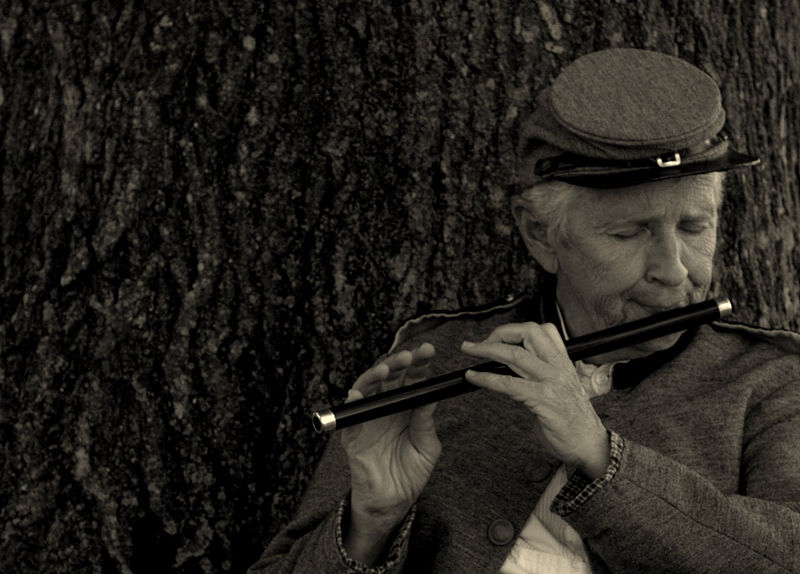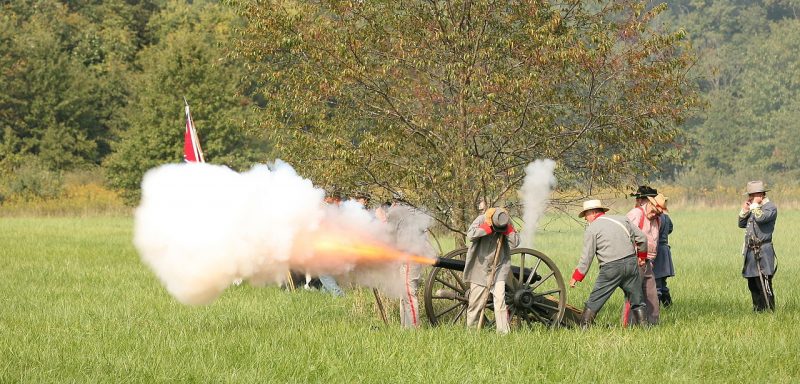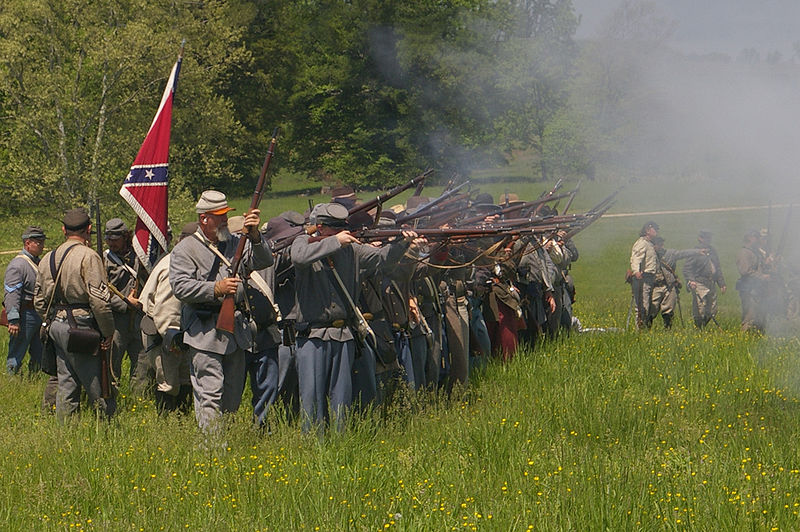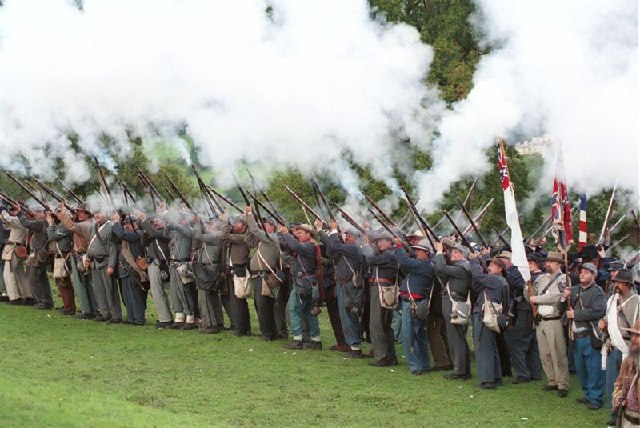
Reenacting the American Civil War began even before the real fighting had ended. Civil War veterans recreated battles as a way to remember their fallen comrades and to teach others what the war was all about. The Great Reunion of 1913, celebrating the 50th anniversary of the Battle of Gettysburg, was attended by more than 50,000 Union andConfederate veterans, and included reenactments of elements of the battle, including Pickett’s Charge. Modern reenacting is thought to have begun during the 1961–1965 Civil War Centennial commemorations. Reenacting grew in popularity during the 1980s and 1990s, due in large part to the success of the 125th Anniversary reenactment near the original Manassas battlefield, which was attended by more than 6,000 reenactors.That year, Time magazine estimated there were more than 50,000 reenactors in the U.S.
In 1998, the 135th anniversary re-enactment of the Battle of Gettysburg took place near the original battlefield. There have been several estimates on the number of participants, but it is widely agreed that it was the largest re-enactment ever held anywhere in the world, with between 30,000 and 41,000 re-enactors participating. This event was watched by about 50,000 spectators.

American Civil War reenactments have drawn a fairly sizable following of enthusiastic participants, young and old, willing to brave the elements and expend money and resources in their efforts to duplicate the events down to the smallest recorded detail. Participants may even attend classes put on by event sponsors where they learn how to dress, cook, eat, and even “die” just as real Civil War soldiers would have. Most reenactments have anywhere from 100 to 1,000 participants, portraying either Union or Confederate infantry, artillery, or cavalry forces.

Some people, though uncommon, may portray Engineers or Marines. The 135th anniversary Gettysburg reenactment (1998) is generally believed to be the most-attended reenactment, with attendance estimates ranging from 15,000 to over 20,000 reenactors.
Reasons given for participating in such activities vary. Some participants are interested in getting a historical perspective on the turbulent times that gripped the nation, particularly if they can trace their ancestry back to those who fought in the war. In some cases, if there are not enough reenactors present on one side, reenactors from the other side are asked to change sides, or “galvanize”, for the day/event.
Although many periods are reenacted around the world, Civil War reenactment is, by far, the most popular in the US. In 2000, the number of Civil War reenactors was estimated at 50,000, though the number of participants declined sharply through the ensuing decade, to around 30,000 in 2011. Possible reasons for the decline include the cost of participating and the variety of other entertainment options.
Although women and children commonly participate in reenactments as civilians (portraying, for example, members of a soldiers’ aid society), some women also take part in military portrayals. This is controversial within the reenactment community; while there were a small handful of women who may have fought in the conflict, almost all of them did so disguised as men. Attitudes on this topic seem to vary widely

Let’s go FARB…
Some, called “Farbs” or “polyester soldiers” are reenactors who spend relatively little of their time or money maintaining authenticity with regard to uniforms, accessories, or even period behavior. The ‘Good Enough’ attitude is pervasive among farbs, although even casual observers may be able to point out flaws. Blue jeans, tennis shoes, polyester (and other synthetic fabrics), zippers, velcro, snoods, and modern cigarettes are common issues.
The origin of the word “farb” (and the derivative adjective “farby”) is unknown, though it appears to date to early centennial reenactments in 1960 or 1961. An alternative definition is “Far Be it for me to question/criticise”, or “Fast And Researchless Buying”. Some early reenactors assert the word derives from German Farbe, color, because inauthentic reenactors were over-colorful compared with the dull blues, greys or browns of the real Civil War uniforms that were the principal concern of American reenactors at the time the word was coined,. According to Mr. Burton K. Kummerow, a member of “The Black Hats, CSA” reenactment group in the early 1960s, he first heard it used as a form of fake German to describe a fellow reenactor. The term was picked up by George Gorman of the 2nd North Carolina at the Centennial Manassas Reenactment in 1961, and has been used by reenactors ever since.
The term “FARB” was commonly used during the Bicentennial Celebration of the Revolutionary War and stood for Far Off Resembles British, as comment on the lack of authenticity of some of the groups who participated at that time. It became after that a statement as to the commitment of the authenticity of any group whose lack of attention to detail was obvious.